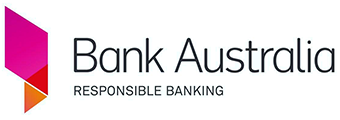When choosing a home loan, borrowers often find themselves stuck deciding whether to take out a fixed rate or a variable rate product. While both have their advantages, this guide will help you explore the benefits and drawbacks of fixed rate home loans.
What is a fixed rate home loan?
A fixed rate home loan locks in your interest rate – and therefore your home loan repayments – for a certain period of time.
The interest rate on a home loan is commonly able to be fixed for between one and five years, with some lenders offering fixed rate periods of up to seven years.
After a borrower's fixed rate period ends, their rate will revert to a standard variable rate. At that point, they can decide to enter another fixed rate loan contract or continue with a variable interest rate.
Benefits of a fixed rate home loan
A fixed rate home loan won't be for everybody, nor is it a one-size-fits-all solution for your home loan needs, but fixed rates do boast numerous benefits. For instance:
Fixed rate home loans can provide certainty
Having a fixed monthly mortgage repayment can be beneficial, especially if you're the type of person who prefers certainty.
Having a fixed rate home loan can help you organise your budget down to the dollar years in advance, potentially allowing you to stay on top of your repayments over the long term.
You can also be sure an increase in repayments won't dismantle your savings strategy, at least until your fixed rate period expires. At that point, you'll be able to re-fix your loan or continue with a variable interest rate.
Fixed rates protect you from sudden rate increases
A fixed rate borrower will find themselves protected if the Reserve Bank of Australia (RBA) raises the cash rate, thereby prompting lenders to raise their interest rates in order to meet increased lending costs.
They'll also be spared from financial pain in the instance that their lender chooses to implement an out-of-cycle rate hike.
In such scenarios, having a fixed rate home loan will likely see you breathing a sigh of relief.
Disadvantages of a fixed rate home loan
It's important to understand the potential downsides of fixed rate home loans before diving in.
You could miss out on rate cuts
One thing you might want to consider before taking out a fixed rate home loan is where the market appears to be heading. As fixed rate home loans aren't impacted by market movements, your interest rate might end up higher than the industry average if interest rates were to fall.
Usually, when lenders are expecting cash rate cuts, fixed rate offerings are cheaper than their variable rate counterparts. On the other hand, fixed rate loans are typically more expensive when banks are anticipating a rate hike.
Fixed rate home loans typically offer fewer features
Fixed rate home loans also tend to provide less flexibility than variable rate home loans. They often don't allow for the use of certain features, such as offset accounts, and they commonly limit how many extra repayments a borrower can make.
You could face break fees if you refinance your mortgage or sell your home
Lastly, borrowers with a fixed rate home loan might face break fees if they refinance their home loan or sell their property. The size of these fees can vary from nothing at all to tens of thousands of dollars, depending on the interest rate environment.
How lenders finance fixed rate home loans
Lenders finance fixed rate home loans differently from variable rate home loans.
They typically source the funds for fixed rate mortgages from longer term investments, such as bonds or the wholesale money market. If you take out a fixed rate home loan, your lender will likely pay interest on the funds it provides you at a lower rate than what you're realising – the difference being its profit margin.
Because of this, if you break your fixed rate agreement, your lender may charge a break fee in order to cover any financial loss it incurs as a result.
In contrast, variable rate home loans are usually funded through deposits from savers and other shorter-term funding facilities.
Compare some of the best fixed rate home loans available now
Check out some of the best fixed rate home loans available in the market today in the table below.
| Lender | Home Loan | Interest Rate | Comparison Rate* | Monthly Repayment | Repayment type | Rate Type | Offset | Redraw | Ongoing Fees | Upfront Fees | Max LVR | Lump Sum Repayment | Additional Repayments | Split Loan Option | Tags | Row Tags | Features | Link | Compare | Promoted Product | Disclosure |
|---|---|---|---|---|---|---|---|---|---|---|---|---|---|---|---|---|---|---|---|---|---|
5.55% p.a. | 5.88% p.a. | $2,855 | Principal & Interest | Fixed | $0 | $350 | 70% | ||||||||||||||
5.69% p.a. | 7.57% p.a. | $2,899 | Principal & Interest | Fixed | $395 | $0 | 80% | ||||||||||||||
5.64% p.a. | 6.01% p.a. | $2,883 | Principal & Interest | Fixed | $0 | $745 | 80% | ||||||||||||||
5.79% p.a. | 6.58% p.a. | $2,931 | Principal & Interest | Fixed | $395 | $250 | 70% | ||||||||||||||
5.69% p.a. | 6.46% p.a. | $2,899 | Principal & Interest | Fixed | $390 | $0 | 80% | ||||||||||||||
5.89% p.a. | 6.12% p.a. | $2,962 | Principal & Interest | Fixed | $10 | $150 | 90% |
Article originally written by Gerv Tacadena. Last updated by Brooke Cooper on 27 September, 2024.
Image by Debby Hudson on Unsplash
Collections: Fixed rate home loan guides










Share